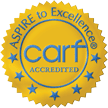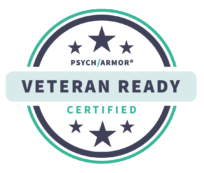Seabrook’s Comprehensive Treatment for Xylazine Addiction
According to the National Institute on Drug Abuse (NIDA), xylazine, also called “tranq,” “is a veterinary tranquilizer that has been found in some illicit drug supplies. People often use xylazine without knowing it when it is added to other drugs, most frequently fentanyl.”
The U.S. Drug Enforcement Administration (DEA) reports that, as a synthetic opioid, fentanyl is 100 times stronger than morphine, and 50 times stronger than heroin. When this street drug is mixed with xylazine, a non-opioid sedative, the DEA indicates that this combination “places users at a higher risk of suffering a fatal drug poisoning. Because xylazine isn’t an opioid, naloxone (Narcan) doesn’t reverse its effects.” The New Jersey Department of Health (NJDH) also indicates that nearly half of all the heroin in the state is cut with tranq.
Despite all of this, the DEA has yet to classify xylazine as a controlled substance under the U.S. Controlled Substances Act.
In February 2024, New Jersey Assemblyman John Azzariti introduced a bill “requiring school districts to teach students about fentanyl and xylazine as part of New Jersey’s health learning standards. It’s named ‘Max’s Law’ in honor of Max Lenowitz of Woodcliff Lake, who died of fentanyl poisoning on his 25th birthday in 2022 after taking a counterfeit Xanax pill,” he declared.
“After emerging on the streets in 2018, xylazine became the second-most common drug to be found in fentanyl in 2023,” the bill states. “The [Centers for Disease Control and Prevention] reports that drug-poisoning deaths involving xylazine soared 1,238% in the U.S. from 2018 to 2021. It is more prevalent in New Jersey than in other parts of the nation.” The bill is currently pending before the Senate Education Committee.
Facts About Xylazine
Xylazine, also called tranq or tranq dope, is a powerful sedative approved by the U.S. Food and Drug Administration for veterinary use. The DEA states that it has “analgesic and muscle relaxant properties” and is used on many different animals, such as laboratory rats, domesticated pets, cattle, sheep, horses, and elk, to “facilitate handling, perform diagnostic and surgical procedures, relieve pain, or act as a local anesthetic.” It’s not safe or approved for human use in any way.
The DEA states that its most common forms are powder from China and liquid diverted from veterinary supply chains.
The NIDA states at this time, there’s not a defined classification of xylazine specifically. “However, early research suggests substance use disorder symptoms and withdrawal symptoms may be more intense for those taking xylazine with fentanyl versus fentanyl alone.”
The NJDH lists the following risks of using xylazine:
- Confusion
- Blackouts
- Heavy sedation
- Dry mouth
- Drowsiness
- Reduced heart rate
- Difficult breathing
- Coordination difficulties
- Coma
The agency also notes that “exposure to xylazine may lead to life-threatening symptoms that mimic an opioid overdose, making it difficult to determine whether an individual is experiencing an opioid or xylazine exposure and/or overdose.”
Other serious drug complications are skin infections, abscesses, and soft tissue sores. It’s believed they develop as the substance causes blood vessels to narrow and reduce blood flow to the skin in the affected area. While these wounds usually appear at an injection site, they also manifest in other ways due to smoking or snorting xylazine combined with fentanyl.
Wounds can appear anywhere on the body but are most common on hands, arms, feet, and legs. What’s worse is that they spread to nearby tissues, making them far harder to treat than other types of skin ulcers.
Minor wounds at stages 1 and 2 look like:
- Blisters
- Small purple bruises or thick scabs
- “Pinpoint” holes in the skin
More severe wounds at stage 3 present as:
- Large open sores
- Dark or black pieces of dead skin
Stage 3 wounds are also often accompanied by symptoms such as darkened tissue, seeping and/or smelly discharge, continuous fever, numbness, pain, an inability to move body parts, and pieces of skin falling off. Left untreated, fingers, toes, and even limbs might require amputation.
Seabrook’s Comprehensive Treatment for Xylazine Misuse
Our four award-winning treatment centers in New Jersey are CARF-accredited facilities—a designation that ensures best practices in behavioral health and evidence-based addiction recovery. With the recent increase in xylazine usage throughout the state, Seabrook is ready to help clients stop the ravages of this devastating drug.
Our board-certified professionals start with medically supervised detoxification as part of The Seabrook Model of comprehensive care. This carefully monitored treatment protocol includes medications such as Ativan and Clonidine to help clients through the detox phase, followed by buprenorphine when appropriate. We take vitals every 15 minutes while our clients are in an observation room for the duration of their detox. We also have two staff surgeons who can manage wound care as necessary.
Phase two begins once xylazine detoxification is complete. This individualized treatment stage features a 28- to 35-day residential inpatient rehabilitation service program. Then, in phase three, our addiction specialists work with clients in a detailed outpatient aftercare program for a minimum of eight months. We want to ensure you or a loved one has the detailed level of care necessary to form a foundation of lasting wellness. Call our admissions team to learn more.




